#yellow wood sorrel
Text
Glowing In Dark Times

Wood Sorrel weeds lighting up a dark landscape. Photo credit: Jonathan Chua.
This was lit by the early afternoon sun. Three stops of underexposure were needed to darken further the already dark background in this capture.
#photographers on tumblr#canon 55-250mm#flora fauna#flora photography#flower pics#olympus em1#olympus photography#Oxalis stricta#photography tips#weed photos#yellow wood sorrel
2 notes
·
View notes
Text
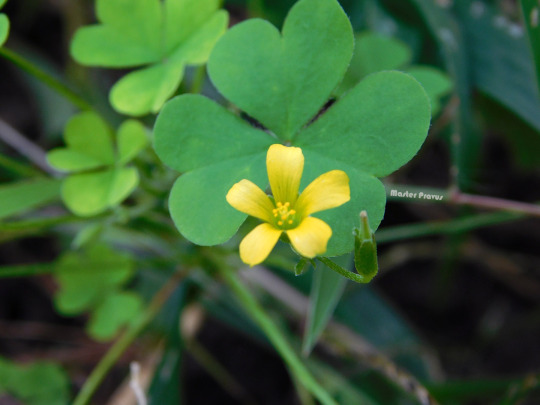
"A Weed is but an unloved flower." -Ella Wheeler Wilcox
Every day I go for a little walk, if I'm able. I've done this ever since I was a little itty bitty Kitty. I think there's always something pretty out there you can find. And I think that even "weeds" can be pretty. It's all in how you look at it. Some days there are gorgeous wildflowers and some days there are itty bitty little plants or a cute rock. There's something every time I go outside that I can find to admire. Sometimes I share them here, if I have my camera with me at the time.
--Please don't delete my caption--
1 note
·
View note
Text

8/5/2023. Yellow wood sorrel, this summer’s favorite. Absolutely delicious. My mother has a cute name for them, too.
0 notes
Text
Weed Witchery: Lemon Clover

Second post about all the beautiful flora we categorically dismiss because it’s not grass. Gonna share what they are as well as some ideas for how they could be used for spells. If anyone knows something I don’t about these plants, please share! I am not an expert. I’m just a lady reading Wikipedia and a few online field guides.
Also! In this post I’m going to mention medicinal uses. I think magic and medicine are intersectional; how something affects our body is great insight into how it can affect us through spellwork. But I am not a trained herbalist. Whenever I touch on medicine, I intend to cite my sources. If I ever forget to include a source, please call me the fuck out.
Quick Facts
Native to: North America and Eurasia
Edible: Yes*
Cat/Dog Safe: No*
*It is not recommended that you eat this in large quantities. Wood Sorrel is high in oxalic acid, which inhibits calcium absorption. For this same reason, it’s generally not considered pet-friendly since they can be particularly vulnerable to kidney stones.
Identification
Yellow Wood Sorrel, or as I know it, Lemon Clover, gets its nickname because it has a sour taste with notes of lemon (or, if you’re my partner, green grapes). It has three heart-shaped leaves and will grow yellow flowers with five petals. Even without the flowers, you’ll know it’s not white clover by the shape of the leaves and the lack of white stripe in the middle. Fun fact, this is a relative of shamrocks, which are not actually clover. But I still call it clover because, well, look at it. Taxonomy makes my head hurt so I’m not gonna go any deeper than that.


(photos from Wikimedia Commons)
Uses and Correspondences
Being a relative of the lucky shamrock and having a sour taste that evokes cleansing lemon, this seems like an ideal ingredient for hex breaking! Should I ever suspect I’ve been cursed or just need to let go of something, I think I’d like to try using this in a ritual bath. Lemon clover also has some medicinal uses worth noting. Native Americans have used it as a poultice to reduce swelling and made infusions for its antipyretic (fever-reducing) properties. I also read that this can be used to curdle milk for cheese making because it’s acidic, but I don’t know how effective it is.
#weed witchery#Lemon clover#Yellow wood sorrel#edible plants#medicinal plants#native plants#green witchcraft#witchcraft#clover#sourgrass#Hex breaking
0 notes
Text
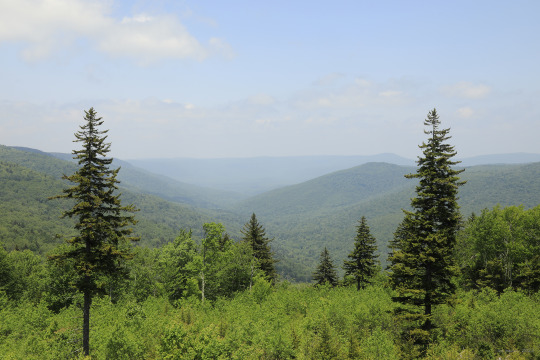



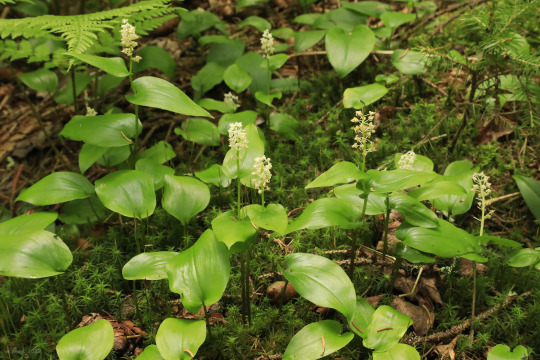

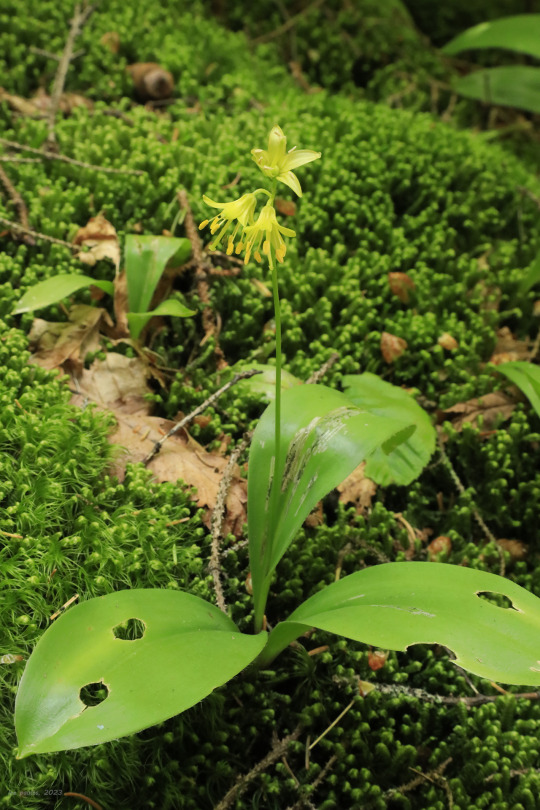
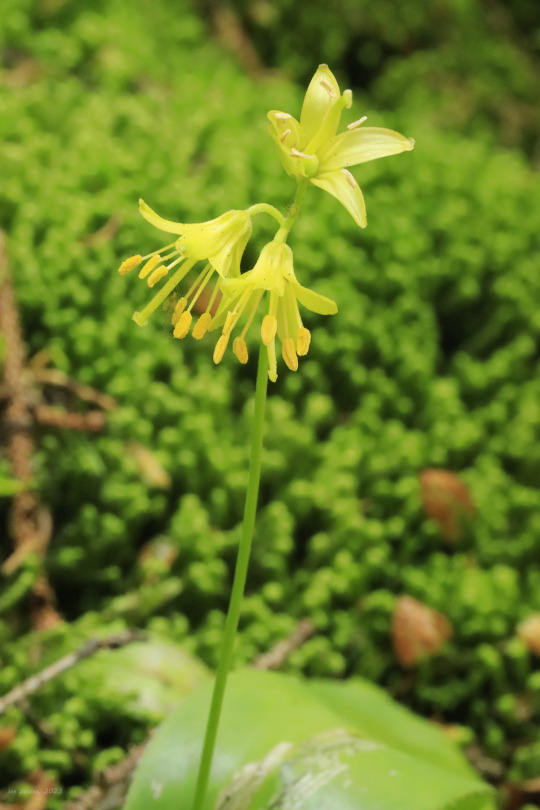





Walk with me: Visit to a high-elevation red spruce forest. The red spruce (Picea rubens) forest on top of Red Spruce Knob, the ninth highest peak in West Virginia, provides a bittersweet glimpse back in time to the primeval beauty and solitude of such places prior to the arrival of the logging companies in the mid-Nineteenth to early Twentieth centuries. The loggers stripped the mountains bare and set in motion the massive wildfires that burned away everything, including the soil itself, down to solid bedrock. Almost a century later, the forest is regenerating and in some places, such as Red Spruce Knob, has regained the richness and vitality of a healthy boreal ecosystem.
From top: a view of Red Spruce Knob, in the far distance, from the Highland Scenic Highway overlook; Canada mayflower (Maianthemum canadense), a ubiquitous understory component of the forest, along with mountain woodsorrel, yellow clintonia (a.k.a. blue-bead lily), hobblebush viburnum, Indian cucumber, green false hellebore, and various mosses and ferns; yellow clintonia (Clintonia borealis) in bloom; pink lady's slipper (Cypripedium acaule); green false hellebore (Veratrum viride) on eastern hay-scented fern (Dennstaedtia punctilobula); and mountain woodsorrel (Oxalis montana).
#appalachia#vandalia#west virginia#wildflowers#spring#flora#allegheny mountains#monongahela national forest#red spruce knob#highland scenic highway#red spruce#canada mayflower#yellow clintonia#blue-bead lily#pink lady's slipper#false green hellebore#eastern hay-scented fern#mountain woodsorrel#mountain wood-sorrel#boreal forest
208 notes
·
View notes
Text


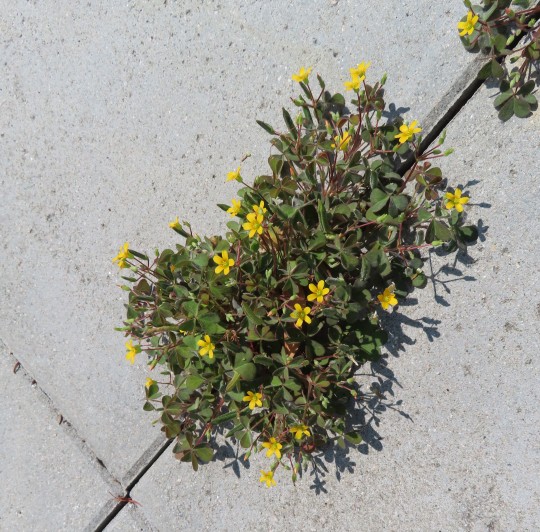
Oxalis corniculata (creeping wood sorel)
Ode to a weed
Creeping wood sorrel doesn't need much. it hasn't rained in weeks but a crack in the sidewalk is enough to produce this very healthy specimen. This plant originated in South East Asia and made it to Europe by the 1500's. It's tiny seeds can be spread by ants and birds but the expansion of human civilization has been the main driver. There are 570 species in the genus Oxalis but this species has established itself in suitable habitats around the world.
According to the Global Invasive Species Database,
"Oxalis corniculata is thought to be invasive in many areas including: Australasia-Pacific (such as Australia, Cook Islands, Fiji, Hawaii, French Polynesia, Palau, U.S. Minor Outlying Islands), Asia (such as Cambodia, China, Indonesia, Japan, South Korea), Central America (Cayman Islands) and North America (Canada). Regardless of area, it has been noticed as an invasive and weedy plant."
Personally, I like this plant's 'pluck' and it's little yellow flowers. When I see a plant like this growing in a crack in the sidewalk, I think of the words to the Frank Sinatra classic, New York, New York, "If I can make it there, I can make it anywhere."
#flowers#photographers on tumblr#creeping wood sorrel#yellow#new york new york#fleurs#flores#fiori#blumen#bloemen#frank sinatra#vancouver
118 notes
·
View notes
Text
common yellow wood sorrel.
21 notes
·
View notes
Text



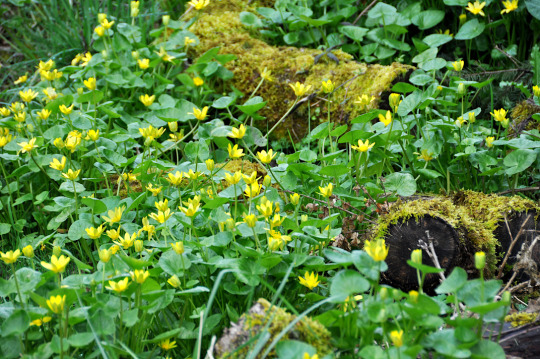
The yellows of the PNW in Springtime
7 notes
·
View notes
Text

#yellow#yellow flowers#plant photography#plant blog#plants#neighborhoodsightseeing#flowers#clover#oxalis#wood sorrel
19 notes
·
View notes
Text

Oxalidaceae Oxalis dellenii
Common Yellow Wood-Sorrel
Identification via Pl@ntNet
2 notes
·
View notes
Text
Clover vs. "Clover"
Clover's one of my favorite plants, and I thought that springtime would be the perfect time to clear up a common misconception about it!
so
This is not clover
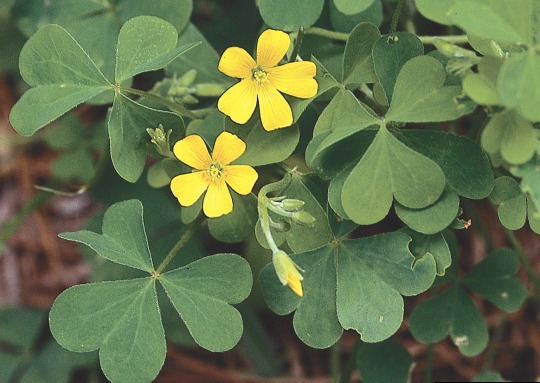
it's yellow woodsorrel! a very common weed (love weeds)
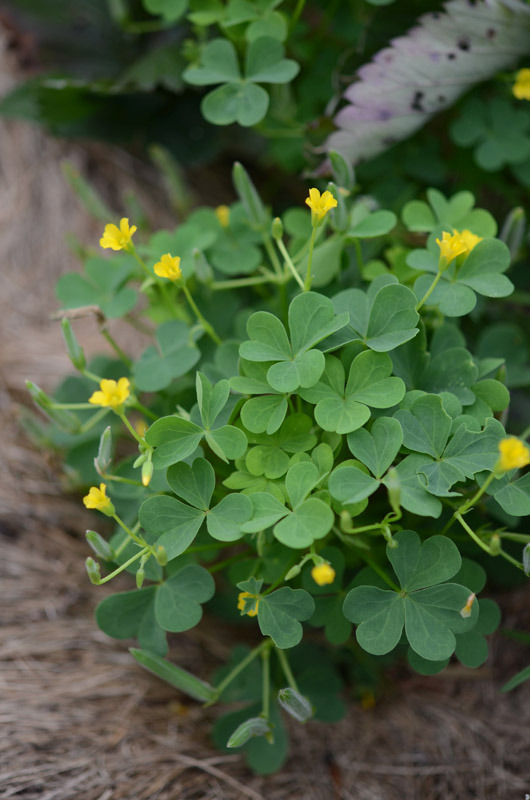

There's also other kinds of woodsorrel that are a bit rarer (at least where I live), like pink woodsorrel (or pink shamrock):
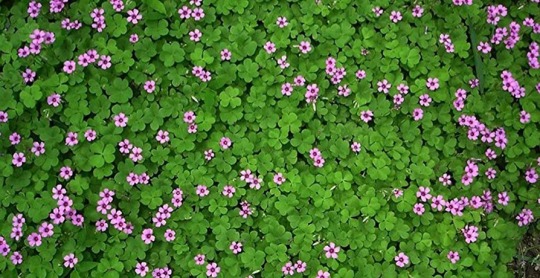
A lot of people see the shamrock leaves and assume it's clover (I know I did until my mom corrected me), but it's not!
This is clover
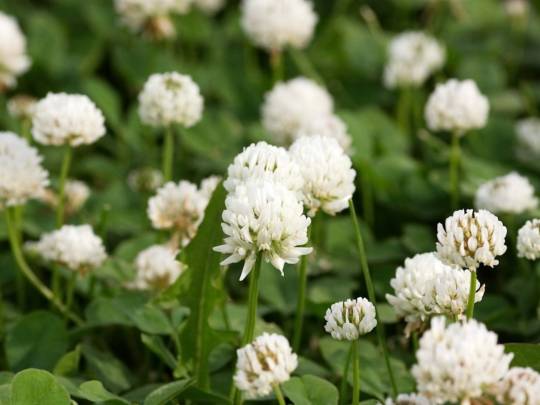
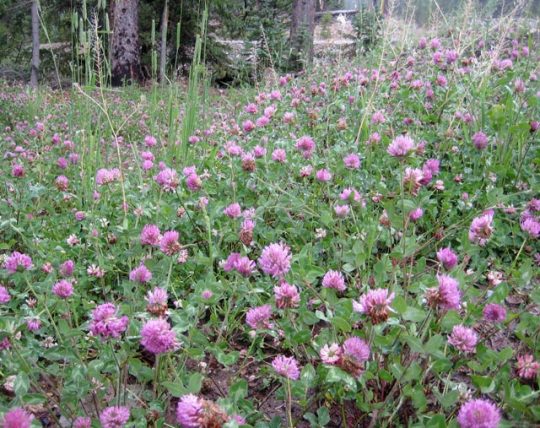
Look at those bulbous flower heads!!! I love it!!!!! And so do cows

It's only good for them as a grazing supplement though, too much clover can be toxic, so it shouldn't be their primary food source (even though they'd love it)
Anyway, this just to say that not all plants with shamrock leaves are clover, and nature's often more fun when you know what you're looking at
Happy Clover Season!
#clover#yellow woodsorrel#pink woodsorrel#shamrock#wood sorrel#plants#not-botany#not-scientific#flowers#spring#weeds#nature#mine
0 notes
Text

Yellow wood sorrel..Oxalis stricta
This tiny clump of sorrel with its heart shaped leaves seems to have followed me home..
253 notes
·
View notes
Text
comprehensive list of edible flowers to celebrate spring!:
magnolias (they taste like ginger)
dandelions (only eat the yellow stuff not the bitter green stuff)
violets (if u make tea from them then add lemon it turns pink! tastes earthy and mildly sweet)
lilac (they're bitter on their own but if you put a flower head in cold water for a couple hours it makes the most divine, refreshing spring drink)
marigolds (kinda peppery, v fun in salads-- used as a sub for saffron in cooking)
rose (the og edible flower, most are very floral and taste like how they smell, they make for an excellent tea as well!)
nasturnium (very peppery, almost like horseradish-- not my fav but if u like it go off i guess)
peonys (mildly sweet, floral flavor and fun to eat off the bush)
wood sorrel (the flowers are small so it barely made it onto this list but they taste like little bombs of green apple so go eat them--also eat the leaves!)
daisy (some say the yellow center tastes like pineapple-- i think its a bit of a stretch but they are sweet and tasty nonetheless!)
red clover (the flower heads can be white or pink-- the pink ones are the sweeter ones)
redbud (these grow on trees in v early spring-- they taste exactly like snap peas.)
always remember to do research before eating any wild plant, and always be 100% certain that u have the right one-- also don't eat stuff that might be contaminated with pesticides
#plants#flowers#wild edibles#edible flowers#nature#cottagecore#flower aesthetic#gremlincore#ive seen a lot of ppl talking abt how the leaves of dandelion are edible#i know#but raw theyre bitter
337 notes
·
View notes
Photo

Yellow Wood Sorrel, Oxalis stricta ~ Oregon, USA
By summerwages
63 notes
·
View notes
Text
Rabbitkin (or any prey animal) tips- FORAGING!
It’s easy to forget that we have nutritious food right in the yard, park, or the woods! For animals like rabbits or deer or anything that likes to forage we can safely forage If you know your plants well!
(REMEMBER- ALWAYS do your research! Look up different plants/mushrooms and MAKE SURE TO POSITIVELY IDENTIFY any plant before eating!)
Heres some yummy forage that’s super good for you:
🌸 Dandelions! The cute yellow flowers are delicious and all parts are edible! Best in early spring before they get bitter.
🍓🫐 wild berries! Blackberries are easy to identify in the wild by spikey bushes and familiar leaves. The fruits are amazing and the leaves are edible in moderation- makes a lovely tea! Wild strawberries are delicious but hard to find!
☘️ Wild sorrel- one of my favorites! A tangy, yellow-green clover looking plant- tastes like sour patch kids! Contains oxalis acid so eat in moderation!
🧄 Wild garlic- A tall, garlicky smelling stalk, great to put in recipes or eat right off the ground.
🧅 Wild onion- These are easy to identify by dark green stalks and oniony smell. Great right off the ground or in recipes!
Kudzu- Everything but the seeds are edible on a kudzu plant! This is a southern growing vine that has taken over the south- but it’s edible and very delicious!
Nasturtium- I plant these in my garden to repel pests- but the leaves and flowers are delicious and taste like peppers! They grow really fast and are so fun to eat!
#rabbitkin#rabbit#bunnykin#preykin#otherkin#therian#Rabbit therian#deerkin#cowkin#prey#grazing#edible plants
218 notes
·
View notes
Text
I Got bored one time awhile ago and made a list of every prefix plus some into organised sections so I thought I might as well share.
All the ones that aren’t cannon to warriors, yet at lest are bold
Describing names
Colours: red, russet, copper, golden, amber, yellow, green, blue, violet, pink, white, gray, black, ebony, dark, pale, silver, brown, tawny, fallow
Pattern, Texture + Size: spot/ted, dapple, speckle, freckle, brindle, patch, mottle, ragged, tangle, kink, bristle, fuzzy, curl/y, wooly, soft, sleek, little, tiny, small, slight, short, tall, long, big, heavy, crooked, broken, half, stumpy, shred, torn, jagged
Actions + Character: flip, pounce, bounce, jump, hop, crouch, down, low, drift, flail, strike, running, fidget, mumble, whistle, snap, sneeze, shiver/ing, shining, flutter, fallen, lost, rush, fleet, quick, shy, sweet, brave, loud, quiet, wild, hope, wish,
Other: claw, whisker, dead, odd, one, spike, fringe, echo, song, hallow, haven
Elements
Time + Weather: day, night, dusk, dawn, morning, sky, sun/ny, moon, storm, lightning, thunder, cloud/y, mist/y, fog, snow, blizzard, ice, frost, dew, drizzle, rain, clear, wind, breeze, gale, shadow, shade, bright, light,
Earth/Water/Fire names: stone, rock, boulder, slate, flint, pebble, gravel, sand/y, dust, mud/dy, meadow, hill, rubble, river, ripple, whorl, float, rapid, shimmer, lake, swamp, marsh, wave, wet, bubbling, splash, puddle, pool, creek, fire, flame, flicker, flash, blaze, scorch, ember, spark, ash, soot, cinder, smoke
Plants
Trees: alder, aspen, birch, beech, cedar, cypress, pine, elm, willow, oak, larch, maple, bay, rowan, timber, bark, log, wood, twig, acorn, cone, seed, spire
Berry/Nut/Fruit/Herb: juniper, elder, sloe, holly, yew, mistle, bramble, hickory, hazel, chestnut, nut, apple, cherry, cranberry, olive, pear, plum, peach, chive, mint, fennel, sage, basil, mallow, parsley
Flowers: aster, poppy, primrose, rose, bluebell, marigold, tansy, pansy, briar, cherry, daisy, dandelion, daffodil, tulip, violet, lily, myrtle, thrift, yarrow, heather, lavender, blossom, bloom, flower, petal
Other: leaf, frond, fern, bracken, sorrel, hay, rye, oat, wheat, cotton, reed, pod, cinnamon, milkweed, grass, clover, weed, stem, sedge, gorse, furze, flax, nettle, thistle, ivy, moss, lichen, bush, vine, root, thorn, prickle, nectar
Animals
Mammals: mouse, rat, mole, vole, shrew, squirrel, hedgehog, bat, rabbit, hare, ferret, weasel, stoat, mink, marten, otter, hog, wolf, hound, fox, vixen, badger, deer, doe, stag, fawn, sheep, cow, pig, lion, tiger, leopard, lynx, milk
Birds: robin, jay, cardinal, thrush, sparrow, swallow, shrike, starling, rook, swift, dove, pigeon, crow, raven, duck, goose, heron, wren, finch, swan, stork, quail, gull, lark, owl, eagle, hawk, kestrel, buzzard, kite, hoot, feather, bird, egg, talon
Fish, Reptiles + Amphibians: pike, perch, pollack, trout, tench, cod, carp, bass, bream, eel, minnow, fin, snake, adder, lizard, turtle, frog, toad, newt
Bug type Names: bug, lady or ladybug, moth, spider, ant, snail, slug, beetle, bee, wasp, dragon or dragonfly, bumble, worm, maggot, cricket, fly, midge, web, honey
Skyclan + Warriorclan: Bella, Billy, Big, Harry, Harvey, Snook, Ebony, Monkey
71 notes
·
View notes